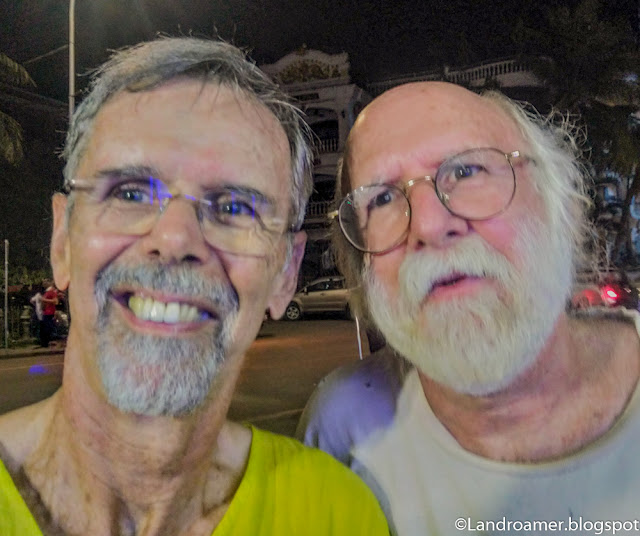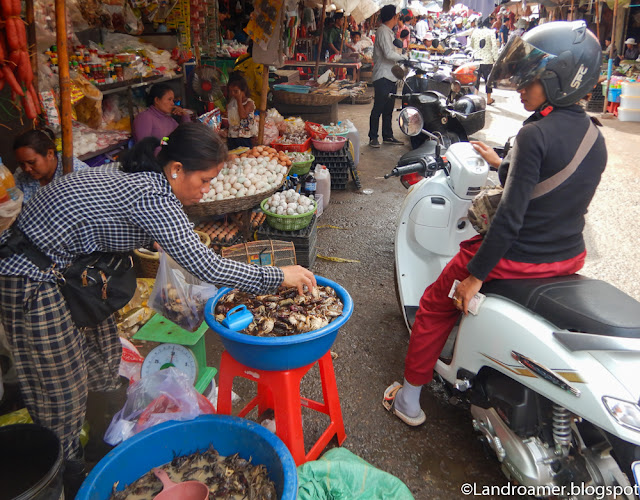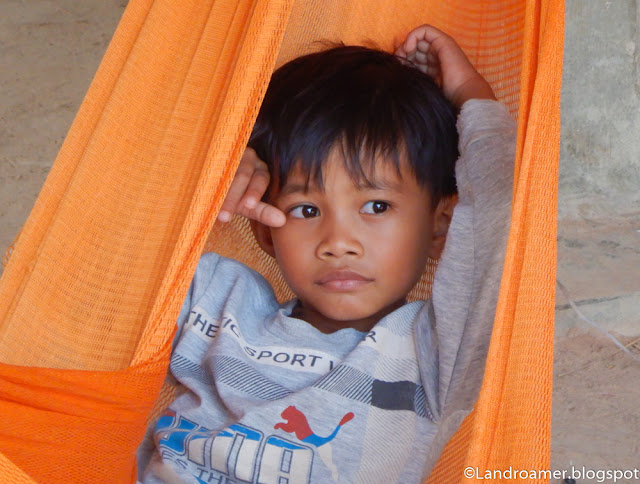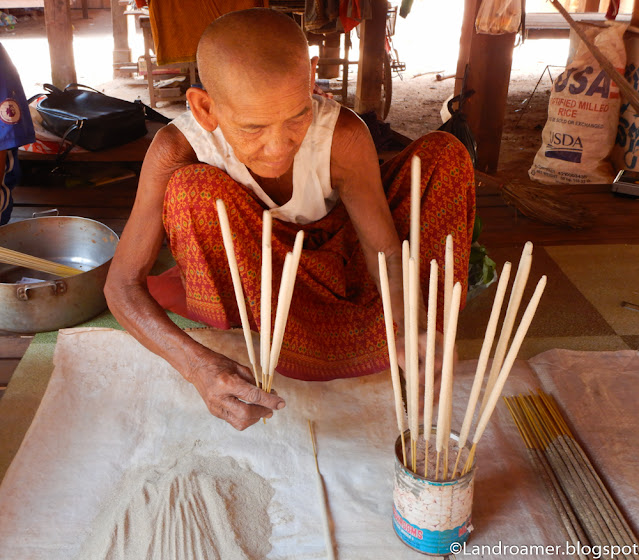My last night in Vietnam was in a floating hotel in Châu Dôc. From there I took a boat on the mighty Mekong River to enter Cambodia.
It was a “first” for me: taking a boat and going through 2 borders on a river before arriving in Phnom Penh, approximately 150 km away.
Exiting Vietnam - Immigration office on a floating office!
Entering Cambodia - A bit further away, immigration office onshore
Around Phnom Penh
The Khmer Rouge...
The Khmer Rouge is the name that was popularly given to members of the Communist Party of Kampuchea (CPK) and by extension to the regime through which the CPK ruled Cambodia between 1975 and 1979. The name was coined in the 1960s by then Prime Minister Norodom Sihanouk to describe his country's heterogeneous, communist-led dissidents, with whom he allied after his 1970 overthrow.
The Khmer Rouge regime was highly autocratic, totalitarian, xenophobic, paranoid, and repressive. Many deaths resulted from the regime's social engineering policies.
The Khmer Rouge regime murdered hundreds of thousands of their perceived political opponents, and its racist emphasis on national purity resulted in the genocide of Cambodian minorities. Summary executions and torture were carried out by its cadres against perceived subversive elements, or during genocidal purges of its own ranks between 1975 and 1978. Ultimately, the Cambodian genocide led to the death of 1.5 to 2 million people, around 25% of Cambodia's population.
The Tuol Sleng Genocide Museum. The site is a former high school which was used as the notorious Security Prison 21 (S-21) by the Khmer Rouge regime from its rise to power in 1975 to its fall in 1979. Tuol Sleng means "Hill of the Poisonous Trees" or "Strychnine Hill". Tuol Sleng was only one of at least 150 execution centers in the country, and as many as 20,000 prisoners there were killed.
Choeung Ek is the site of a former orchard and mass grave of victims of the Khmer Rouge – killed between 1975 and 1979 about 17 kilometres south of the Phnom Penh city centre. It is the best-known of the sites known as The Killing Fields, where the Khmer Rouge regime executed over one million people between 1975 and 1979.
The Royal Palace of Cambodia is a complex of buildings which serves as the royal residence of the King of Cambodia. The Cambodian monarchs have occupied it since it was built in the 1860s, with a period of absence when the country came into turmoil during and after the reign of the Khmer Rouge.
The palace was constructed between 1866 and 1870, after King Norodom relocated the royal capital from Oudong to Phnom Penh. It was built atop an old citadel called Banteay Keo. It faces approximately East and is situated at the Western bank of the cross division of the Tonle Sap River and the Mekong River called Chaktomuk (an allusion to Brahma).
Street Food
Welcome to Siem Reap
After visiting Phnom Pen, I took a bus to Siem Reap, where I visited Dani, a friend that I had met 43 years ago, while studying in Michigan!
He’s married, lives there with his 2 teenage children and he’s a tour guide for the numerous tourists that come through Siem Reap. He speaks Khmer and he’s well known by the local people and craftsmen around town.
With Dani as a guide and together with a few other tourists we shall go on a day tour, starting by visiting the busy market and sampling various dishes.
To the market - With a motorcycle, because Why Not?
After the market, in a tuk-tuk, we hit the road to visit craftsmen and sights
Fill-up station : gasoline for sale
Lunch time !Dog meat! - Because Why Not?
Angkor Wat, literally 'City of Temples', is a temple complex in northwest Cambodia. A national symbol and sacred site of Cambodian Buddhism, the complex is a UNESCO World Heritage Site and a significant tourist destination.
Angkor Wat is the largest religious complex in the world by land area, measuring 162.6 hectares or more than three times the area of the Vatican City. At the centre of the temple stands a quincunx of four towers surrounding a central spire that rises to a height of 65 m above the ground. The temple has three rectangular galleries, each raised above the next. It lies within an outer wall 3.6 kilometres long and a moat more than five kilometres long.
The temple was built in the early 12th century at the behest of Suryavarman II of the Khmer Empire, within the imperial capital Yaśodharapura. It served as the state temple for the empire. Originally dedicated to the Hindu god Vishnu, it was converted to a Buddhist temple towards the end of the 12th century.
As the best-preserved temple at the site, Angkor Wat is the only one to have remained a significant religious centre since its foundation. The temple is at the top of the high classical style of Khmer architecture. It is one of the most important pilgrimage sites for Buddhists in Cambodia and around the world, having played a major role in converting Cambodia into a Buddhist nation. It has become a symbol of Cambodia, appearing on its national flag, and is the country's main tourist attraction.
Want to see more temples?
Click here to see the 9 temples that I visited!
From Siem Reap, with a single bus ticket to Bangkok, I boarded a first bus to the border at Krong Poi Pet, did the immigration to exit Cambodia and enter Thailand and boarded another bus to Bangkok. From Bangkok I flew to Switzerland for some time back at home.





















































































































